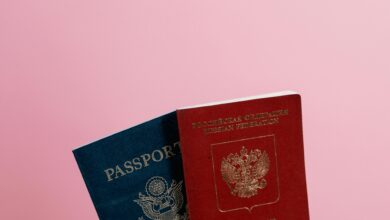Does Travel Insurance Cover Medical Emergencies? A Comprehensive Guide

Traveling is an exciting adventure, whether you’re exploring a new country, visiting family, or embarking on a dream vacation. However, unforeseen circumstances can arise, and one of the most common concerns for travelers is medical emergencies. The good news is that many travel insurance policies do provide coverage for medical emergencies—but the extent of that coverage varies depending on the policy you choose. In this guide, we’ll break down everything you need to know about how travel insurance handles medical emergencies, what’s typically covered, and how to ensure you’re adequately protected.
What Is Travel Insurance?
Before diving into medical emergencies specifically, let’s clarify what travel insurance is. Travel insurance is a type of coverage designed to protect travelers from financial losses associated with trips. It can include benefits such as trip cancellation, baggage loss, flight delays, and—most importantly for this discussion—medical emergencies.
While not all travel insurance policies are created equal, many offer robust medical coverage as part of their plans. This makes it especially valuable for international travelers, who may face high healthcare costs or limited access to medical facilities abroad.
Does Travel Insurance Cover Medical Emergencies?
Yes, most comprehensive travel insurance plans include coverage for medical emergencies . This means that if you experience a sudden illness, injury, or accident while traveling, your policy may help cover the associated medical expenses. However, the specifics of what’s covered depend on the terms of your policy. Let’s explore the key aspects of medical emergency coverage in travel insurance.
1. Emergency Medical Expenses
- This is the core component of medical coverage in travel insurance. It typically includes:
- Hospital stays
- Doctor visits
- Diagnostic tests (e.g., X-rays, MRIs)
- Prescription medications
- Ambulance services
- For example, if you break a leg skiing or contract food poisoning while traveling, your policy may reimburse you for the treatment costs.
2. Emergency Evacuation and Repatriation
- In severe cases where local medical facilities are inadequate, travel insurance may cover emergency medical evacuation to transport you to the nearest appropriate hospital.
- If you pass away while traveling, some policies also include repatriation of remains , which covers the cost of returning your body to your home country.
3. Pre-Existing Conditions
- Many standard travel insurance policies exclude pre-existing medical conditions from coverage. However, some insurers offer waivers or specialized plans that extend coverage to pre-existing conditions—if you meet certain criteria, such as purchasing the policy within a specific timeframe after booking your trip.
4. COVID-19 Coverage
- With the rise of global pandemics like COVID-19, many travelers are concerned about whether their insurance will cover pandemic-related medical emergencies. Some modern travel insurance plans now include coverage for illnesses like COVID-19, but it’s essential to verify this before purchasing a policy.
Types of Travel Insurance Plans That Include Medical Coverage
Not all travel insurance policies are the same, so it’s important to understand the different types of plans available:
1. Comprehensive Travel Insurance
- These plans offer the broadest range of coverage, including trip cancellation, baggage loss, and medical emergencies. They are ideal for travelers seeking all-encompassing protection.
2. Medical-Only Travel Insurance
- If your primary concern is health-related issues, you can opt for a medical-only travel insurance plan . These policies focus exclusively on medical emergencies and are often more affordable than comprehensive plans.
3. Specialized Plans
- Certain activities, such as extreme sports or cruises, may require specialized insurance. Make sure your policy covers any unique risks associated with your travel plans.
What Isn’t Covered by Travel Insurance?
While travel insurance provides valuable protection, it’s equally important to know its limitations. Here are some common exclusions:
- Elective Procedures
- Travel insurance does not cover elective or cosmetic surgeries, routine check-ups, or non-emergency treatments.
- High-Risk Activities
- Engaging in high-risk activities like skydiving, scuba diving, or mountain climbing may void your coverage unless you purchase a specialized plan.
- Alcohol or Drug-Related Incidents
- Injuries or illnesses resulting from intoxication or illegal drug use are generally excluded.
- Non-Emergency Care
- Travel insurance is designed for unexpected emergencies, not ongoing or pre-planned medical care.
- Pregnancy-Related Issues
- Most policies exclude complications related to pregnancy, though some may offer limited coverage for emergencies during the first or second trimester.
How Much Does Medical Coverage in Travel Insurance Cost?
The cost of travel insurance with medical coverage depends on several factors, including:
- Age : Older travelers typically pay higher premiums due to increased health risks.
- Destination : Countries with high healthcare costs (e.g., the United States) will result in higher premiums.
- Trip Duration : Longer trips usually mean higher costs.
- Coverage Limits : Policies with higher medical expense limits or additional benefits like evacuation coverage will be more expensive.
On average, travel insurance with medical coverage costs between 4% and 10% of your total trip cost . For example, if your trip costs $5,000, you might expect to pay $200–$500 for a comprehensive policy.
Tips for Choosing the Right Travel Insurance Plan
To ensure you’re adequately covered for medical emergencies, follow these tips when selecting a travel insurance policy:
1. Read the Fine Print
- Carefully review the policy details to understand what’s included and excluded. Pay special attention to coverage limits, deductibles, and exclusions.
2. Assess Your Health Needs
- Consider your personal health risks, destination, and planned activities. If you have a chronic condition or are traveling to a remote area, prioritize policies with robust medical and evacuation coverage.
3. Compare Multiple Providers
- Use comparison websites to evaluate quotes and coverage options from different insurers. Look for customer reviews and ratings to gauge reliability.
4. Check for Pandemic Coverage
- If you’re concerned about illnesses like COVID-19, confirm that the policy explicitly covers pandemic-related emergencies.
5. Purchase Early
- Buy your travel insurance as soon as you book your trip. Some benefits, such as coverage for pre-existing conditions or trip cancellations, are only available if you purchase early.
Real-Life Examples of Medical Emergency Coverage
Here are two hypothetical scenarios to illustrate how travel insurance works in practice:
Scenario 1: Broken Leg While Skiing
- You’re skiing in Switzerland and suffer a broken leg. Your travel insurance covers the cost of an ambulance ride to the hospital, X-rays, surgery, and physical therapy. Without insurance, you could face thousands of dollars in out-of-pocket expenses.
Scenario 2: Appendicitis in Thailand
- While traveling in Thailand, you develop appendicitis and require immediate surgery. Your travel insurance reimburses the hospital bill and arranges for emergency evacuation to a better-equipped facility if necessary.
These examples highlight the importance of having adequate medical coverage when traveling internationally.




